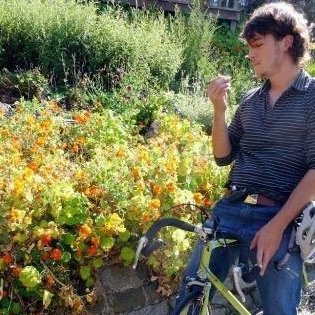Traffic fatalities have gone down in the last 20 years
But while cars and roads have become safer, San Francisco is still a long way from it’s Vision Zero initiative with the goal of zero traffic fatalities. Since its inception in 2014, many activists say they aren’t doing enough to create safer roads and spaces for cyclists.
Activists look at New York City
They point to NYC as an example of how much more San Francisco could be doing, and the real affect that NYC’s initiative has has on lowering the fatality rate for everyone.
Cyclists are particularly vulnerable since they are usually forced to ride in sharrows, or shared-lane markings, which use the same infrastructure and lanes as cars. New York city has limited their use of these, opting for repainting the roads to create protected bike-lanes wherever possible.
Biking doesn't thrive at SF State like it does at other universities across the nation.
"Slowing down traffic around campus would definitely make biking safer ... but if you look at maps of new infrastructure ... all the new projects are in the northeast corridor (of San Francisco)."
The roads aren't safe, but they could be
Bikers explain what challenges they face in their daily commutes, and what they're doing to change them for everyone.
Bikers killed, severely injured, and injured
Map and data courtusy of SF Vision Zero
Vision Zero
"Cyclist high-injury corridors represent 4% of San Francisco’s street miles, and include 60% of severe and fatal cyclist injuries and 50% of total cyclist injuries reported to the California Highway Patrol between 2007 and 2011." -Vision Zero
They track this data to focus their approach and impact when making the road a better place.
60% of fatal and severe injuries occur on 4% of the city's roads
Not enough
“I moved to San Francisco and started riding my bike around and I realized that it was just really dangerous,” Patrick Traughber said.
Though his fight to make the streets safer for cyclists, he has met many families of bikers that have been killed in traffic. He points to the death count as a sign that more can be done.
Katherine Slattery
April 14, 1990 - June 22, 201626 years old, she was killed in a hit-and-run collision with an SUV that allegedly ran the red light. She was one of two bikers in SF to be killed in hit-and-runs in the same evening.
One Reddit user stated that they “heard the impact and then saw the cyclist fly 20 feet in the air as the car continued at a high speed without a pause.“

Amelie Le Moullac
Aug. 10, 1989 - Aug. 14, 2013Four days after her 24th birthday, Amelie Le Moullac was killed on a bicycle by a truck making a right turn from Folsom Street onto Sixth Street.
The case was almost by a sloppy investigation, that advocates point to as further proof that of the city’s inaction towards cyclists, even when it results in their deaths.
culture and enforcement are lax, making biking DANGEROUS
Bikers on the road tweet out cars' missuse of bike lanes.
THIS HAS PUSHED ACTIVISTS TO TAKE MATTERS INTO THEIR OWN HANDS
Citizen vigilante groups like SFMTrA take to the road and install their own bike infrastructure.

